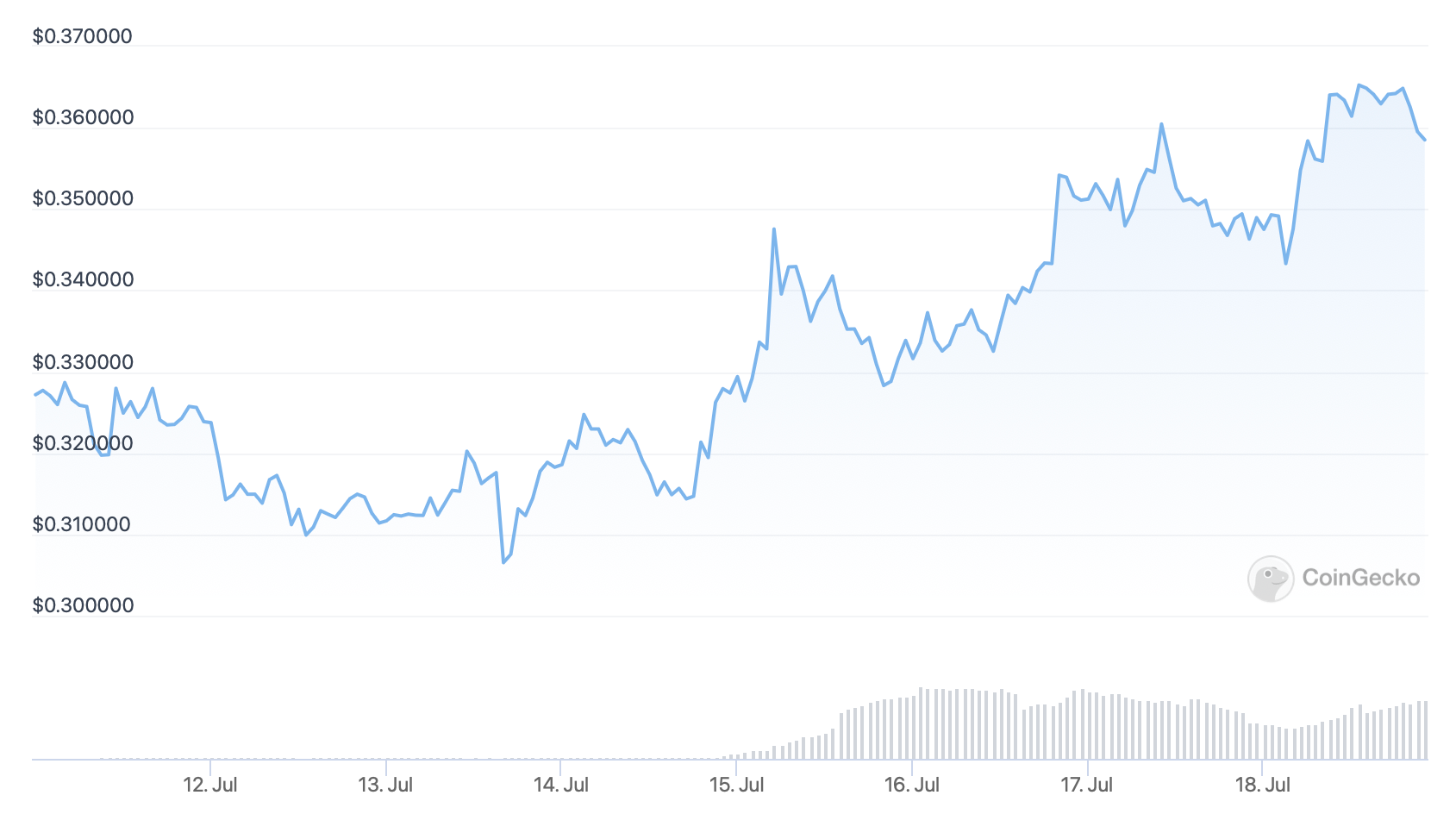CoinLoan Weekly: Improving sentiment, ETH’s rally, cheaper BTC mining

Price dynamics
BTC price
Bitcoin was sluggish at the start of the week — on Wednesday, July 13, it rebounded from the 7-day low of $19,113.69. The rise continued through the weekend, culminating in a jump to $22,343.51 on Monday, July 18.
After another decline, the Fear & Greed Index eventually rose to 24, marking a record 72 days in the Extreme Fear zone. The key drivers were positive network news (Merge date for Ethereum) and the easing bets of Fed’s 100-basis point rate hike. SEC Chair Gary Gensler’s mention of possible exemptions from securities regulations reinforced support.
At the time of writing, BTC is trading at $21,578.34, with a 24-hour uptick of +3.0% and 7-day growth of +3.7%.

Get a crypto loan backed by BTC or earn up to 7.2% APY with our Interest Account!
ETH price
Last week, ETH dramatically outperformed BTC as it surged by 26%. Wednesday’s 7-day low ($1,027.42 on July 13) was followed by three robust jumps. On Monday, July 18, ETH rose to $1,495.20, gaining over 9% in one day.
The ninth shadow fork finally went live on Thursday, July 14. This event brought Ethereum closer to the Merge, which is now scheduled for September. In August, the team is expected to roll out the final testnet merge called Goerli.
As of this writing, ETH is changing hands at $1,473.16, with a 24-hour gain of +9.7% and a 7-day surge of +26.0%.

Get up to 7.2% APY on your ETH in Interest Account or get a quick crypto loan without credit checks!
XRP price
While XRP followed and outpaced BTC, its weekly chart also captured an anomaly – a dramatic volume hike on Friday, July 15. It coincided with a rapid jump following a low of $0.306526 on Wednesday, July 13. On Monday, July 18, XRP reached $0.365263.
XRP’s typical trading volume does not exceed 1.5 billion XRP, yet it jumped over 18.7 billion during Friday’s session. The change perplexed traders and market analysts alike. Jed McCaleb’s influence is unlikely — his final outbound XRP transfer took place on July 17 and amounted to merely 1.1 million XRP. Other versions suggest insider trading and a test run.
As of now, XRP is trading at $0.357031, with a 24-hour increase of +2.4% and a 7-day gain of +9.6%.

Earn up to 7.2% APY on XRP with our Interest Account or use your tokens for a hassle-free crypto loan!
Cryptocurrency news
New deadline for the Merge pushes Ether up
In the early hours of Monday, July 18, ETH surged above $1,400. This followed a gain of more than 10% over 24 hours. At the time of publication, the biggest altcoin by market cap is still trading confidently above the level, outperforming Bitcoin.
Market experts attribute the uptick to the new Ethereum Merge date. After many setbacks and delays, the transition to Proof-of-Stake is scheduled for September 19, although the “timeline isn’t final,” according to Ethereum Beacon chain community director Superphiz.
On Thursday, July 14, Ethereum’s ninth shadow fork went live without any significant glitches reported. This brought the blockchain closer to the much-anticipated mainnet upgrade. The Merge will replace the Proof-of-Work consensus with the more sustainable Proof-of-Stake, slashing the energy consumption by over 99%.
The new timeline for the Merge pushed the price up. Combined with the easing of market conditions, it also prompted whales to start stocking up on ETH. According to a newsletter by Lucas Outumuro, head of research at IntoTheBlock, “whales’ increased volume appears to be helping build bullish momentum.”
BTC production cost plunges to $13,000
Soaring energy costs, the highest inflation in four decades, and lower asset prices have made Bitcoin mining complicated — and cheaper. In their fight for survival, miners are using less energy for the sake of efficiency. The Cambridge Bitcoin Electricity Consumption Index shows a clear drop in network demand.
The Proof-of-Work consensus algorithm requires substantial computing power. By solving complex puzzles, miners validate transactions, produce new coins, and support the security of the blockchain. Mining is highly profitable in a bullish market, as it makes hoarding BTC attractive.
Now, Bitcoin is worth less than half of its record high of $69,000. Shares of major publicly traded miners have sunk. Previously, cheaper BTC prompted miners to sell their holdings to repay debt or cover the operating costs. This time seems different.
According to JP Morgan Chase & Co. analysts, the average production cost has shrunk from roughly $20,000 to around $13,000 since early June, while the hash rate has been volatile. On the downside, this improved profitability may become a negative for the Bitcoin price. The production cost is perceived as “the lower bound of the bitcoin’s price range in a bear market,” a key factor for its valuation.
Still, the pressure could be subsiding as the latest drawdown was caused by the internal flaws of the industry reflected in the downfall of Terra, Three Arrows Capital, and Celsius Network. According to John Todaro, an analyst at Needham, “as weeks progress, we believe the contagion risk declines considerably. Additionally, our analysis indicates that a large portion of leverage has now come out of the crypto ecosystem.”